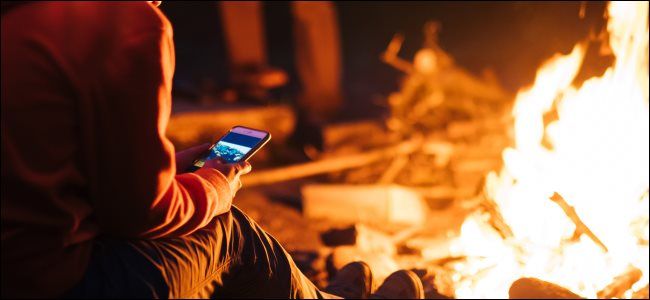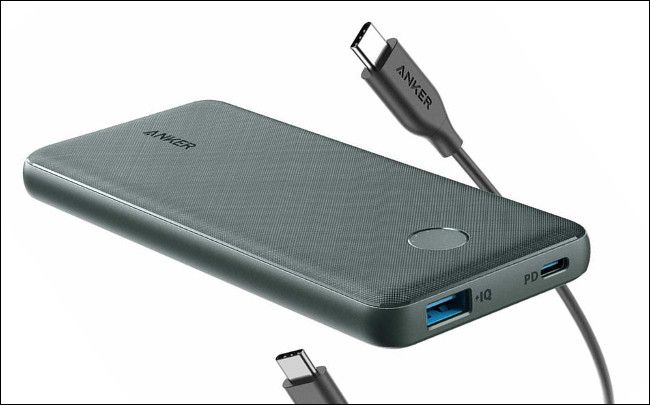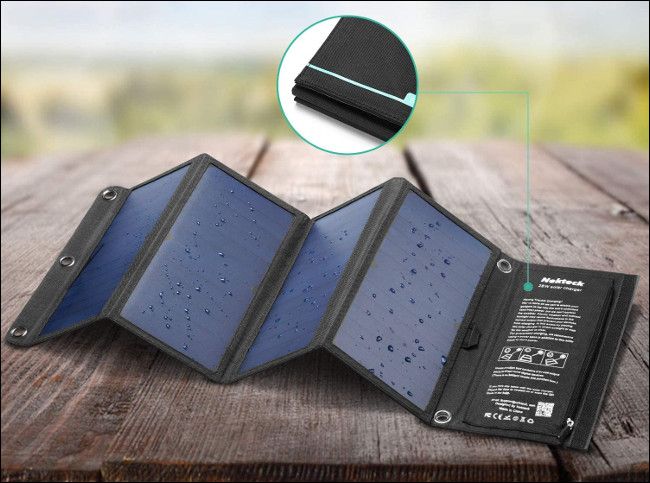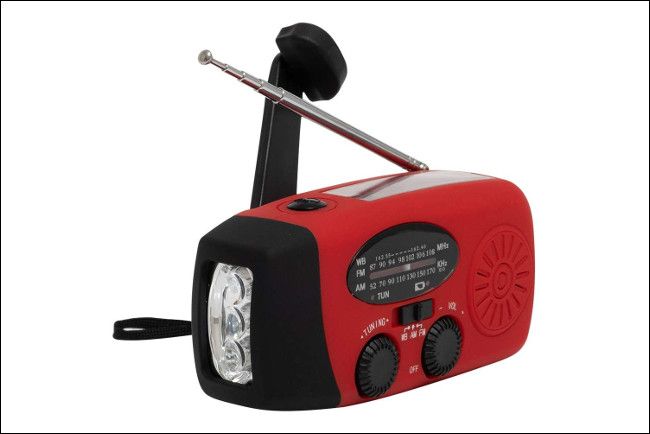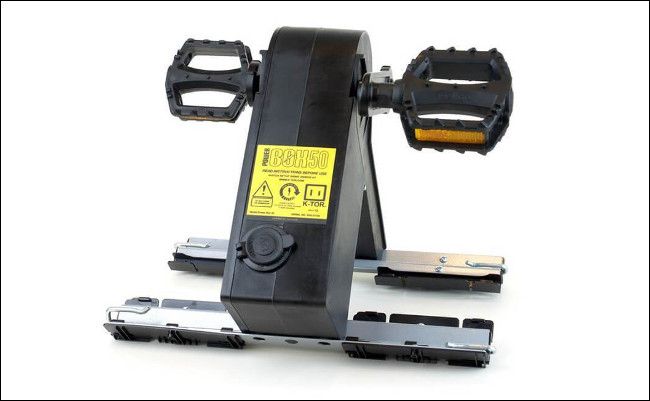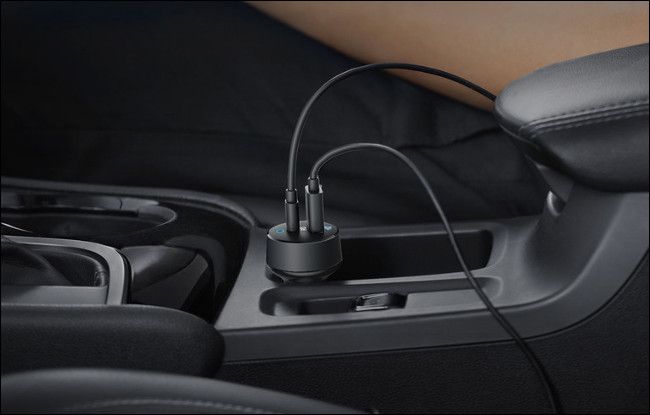Quick Links
Most of us can't leave home without our smartphone, even if we're going camping in the wilderness. Fortunately, there are plenty of ways you can keep your device charged, even in the middle of nowhere, come wind, rain, or shine.
A USB Battery Bank
It doesn't get much easier than charging a USB battery bank at home before you go. Then, you can top up your iPhone or Android phone as needed throughout your trip. This is great for short trips, overnight camping, or weekend music festivals.
To make sure you have enough charge before you leave, research your device's total battery capacity (measured in milliamp hours, or mAh). You'll also need to factor in how often you charge your device, although, it's best if you use it as little as possible to preserve as much juice as you can.
Let's use the iPhone 11, which has a 3,110 mAh battery, as an example. To charge it once a night for three nights, you'd need around 10,000 mAh. While that might sound like a lot, a charger of that size would easily fit in a rucksack or daypack.
Something like the Anker PowerCore Slim 10000 should do the trick. Just make sure you buy a power bank with fast power delivery if you have a compatible device.
If you're looking for a multifunctional USB charger, consider a purpose-built camping lantern. These light sources are durable, bright, and often include USB outputs for charging your gadgets.
Serious about camping and want to charge the whole family's devices and power lights or a laptop while you're away? If so, you might want to invest in a portable power station, like the EcoFlow River series. These larger units start at 100,000 mAh (at 3.7 V) for around $550.
Portable Solar Panels
If you don't want to rely on a battery pack you have no means of recharging, solar panels could be the answer. Their efficiency depends on a range of factors, though, including how sunny it is, and the wattage of the photovoltaic panels.
The problem with solar panels is they're largely dependent on the weather. This is why so many solutions designed for charging smartphones and similar devices use multiple panels. For a truly effective solar charging solution, you're going to need an array of around three panels to charge your phone within a few hours.
This could be a problem if you're not staying in one place. Many hikers opt to hang solar panels over their rucksacks to charge while they hike. Of course, this inevitably affects how much direct sunlight the solar panels receive. For this to work efficiently, you have to position your array so it's facing the sun for as long as you want to charge.
Solar arrays that offer around 25 watts of charge should be sufficient for individual use. The Amazon reviews on the Nekteck 28 Watt Portable Solar Panel suggest it can charge a 10,000 mAh power bank from empty to full in two days. Another reviewer saw a 50 percent increase in a smartphone's charge after two hours in the sun.
For best results, pair your solar panels with a large battery bank. Charge when the sun is shining, and when it isn't, you should have enough spare juice in your battery pack for emergencies.
Hand-Crank Chargers
Kinetic chargers aren't the same as battery banks or even solar chargers. You won't be charging your smartphone from empty to full with one of these. These are designed for those last-resort occasions when you need to make a phone call, but you're miles away from a wall plug.
They also have quite a price range, from cheap $20 hand cranks, to $400 human-powered generators. Some offer a raw power output to the USB device of your choice, while others use the crank to charge a built-in battery, which you then use to charge other devices. If you buy one with a battery, you can usually charge it at home before you need it.
At the cheapest end of the market (around $20), you'll find chargers like the Aivica USB Charger with Radio and Flashlight. Most products in this price range offer the same limited feature set. You'll be cranking for a long time to make a phone call that lasts even a minute.
If you want something more capable, a small 30-watt Hand-Crank Generator will cost you around $150-$250. Its better gearing means more efficient charging because you trade revolutions per minute for more resistance. Most chargers in this price range also allow you to control the voltage, and many also include features like waterproofing and an all-metal chassis.
If you want the best possible solution and you're not afraid to work up a sweat, the K-TOR Power Box 50 is a pedal-powered generator capable of outputting 50 watts (at 14 volts, up to 3 amps). This sturdy-yet-portable solution will set you back around $375.
Convert Running Water into Electricity
If you want to impress everyone at the campsite, the WaterLily Portable Turbine is the charging solution for you. For just shy of $200, you can convert flowing water in a river or stream into a USB or 12-volt (car adapter) power source that charges 24/7.
You can even use the WaterLily to charge with wind, which is perfect if you're not camping near a water source. The Canadian manufacturer claims the WaterLily can generate about 15 watts and charge most small electronics at the same rate as a wall charger.
Unlike the sun, a river is a constant source of energy, regardless of the weather or time of day.
The main drawback is you'll need to be right next to a river with your device to charge it or use a very long, weatherproof cable. This is why it's probably best to use the WaterLily to charge a USB battery bank, which you can then use to charge smartphones and other devices.
If you're particularly power-hungry, you can also chain together multiple 12-volt WaterLily units to double or triple (and so on) your power output.
Use Your Camping Stove
Camping stoves allow you to cook a delicious meal in the middle of nowhere. The BioLite CampStove 2 not only cooks, but it also converts waste heat into power you can then use to charge your smartphone. It generates 3 watts (5 volts) of power and includes a built-in USB battery, which you can use to charge devices or turbocharge the stove.
The CampStove 2 uses sticks, wood scraps, or biofuel pellets as its primary fuel source. A heat probe captures waste heat, which is then converted to electricity and stored. The battery pack can then charge smartphones or drive internal fans to improve airflow and increase the stove's intensity.
The BioLite also includes a USB-powered FlexLight so you can see to cook at night. The battery only holds about 2,600 mAh. However, if you cook multiple times per day, it should be enough to keep most smartphones alive with minimal use.
Because biomass is its primary fuel source, the BioLite is a cooking and charging device in one. As long as you can light a fire, you can boil water for drinking, cook something, and make a phone call.
Use Your Car
If you're not hiking in the wilderness or camping miles away from your vehicle, you might want to use it as a power source. As long as you have enough fuel, you can run the engine for a short while to top up a phone battery or charge any additional devices.
Most modern vehicles have USB ports that provide at least 5 volts over 1 amp, which is enough to (slowly) charge your smartphone. If your vehicle is older, or you run out of USB ports, you can also convert a 12-volt cigarette lighter into a charger with an adapter. The Anker PowerDrive PD 2 will give you a two-port USB charger for around $20.
Because this 12-volt adapter pulls down much more power (up to 18 watts), it can charge your smartphone much faster. Just don't leave the ignition running for too long, or you could end up with a dead battery when it's time to head home.
Stay Connected Wherever You Are
Although camping is about getting away from the hustle and bustle of modern life, most of us can't switch off completely. Limiting the time you spend on your smartphone will allow your mind to switch off and preserve the device's battery power.
Has it been a while since you went camping? Brush up on the essential gear you'll need before heading out.

